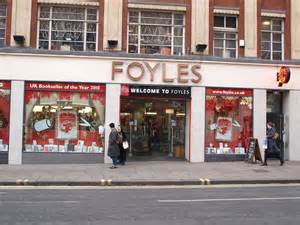‘Teeth, touch and talent – where haptics, drawing and dentistry meet’ is the intriguing title of an art exhibition housed in The Gallery on the third floor of Foyles Bookstore in London’s Charing Cross Road. It comprises how a number of first year dental students at King’s College, London, have ‘recorded’ their view of a tooth.
Entry is free to the exhibition, which runs until 1st September and is open from 9.30am to 5pm from now until Saturday and from 11.30am to 6pm on Sunday 1st September.
It’s too easy to indulge in puns at this stage. Here we have dental students drawing teeth or recording their impression of a tooth. Yet the images – which include images of a tooth made in rice, string or plastic gloves as well as ‘still life’ and impressionistic sketches – are arresting and, in some instances, thought provoking in a way which art in galleries is supposed to do.
However, there is a deeper, educational perspective behind this joint venture by King’s College, London and London’s University of the Arts. The venture is part of the Technology Enhanced Learning programme, which aims to understand and develop the roles of digital technologies in improving the quality of learning and teaching. The programme has identified four key themes:
· Flexibility – enabling the provision of education and skills to be deployed in more open, variable and accessible ways
· Personalisation – exploiting the responsive and adaptive capabilities of advanced digital technologies to achieve a closer match with learners’ needs, dispositions and identities
· Productivity – achieving higher quality and more effective learning in affordable and acceptable ways
· Inclusion – improving the reach of education and lifelong learning to groups and individuals who are ‘not best served by mainstream methods’
Among the initiatives within this programme is Haptic Technology Enhanced Learning (hapTEL). Haptics is the study of human touch and interaction with the external environment via touch.
This programme – available at King’s College, London, the University of Reading and Birmingham City University – aims to develop a sophisticated ‘virtual mouth’ to be used in the education of dental students. Its aim is to provide a realistic simulation on which students can train. The project intends to evaluate the outcomes of this new element of dental education as well as pointing to the educational possibilities of haptic devices more generally.
According to King’s College London’s Professor Margaret Cox, the director of the interdisciplinary team at the hapTEL Centre: “We’re developing a comprehensive taxonomy of the characteristics of haptics and complementary devices – particularly how they contribute to the range of manipulative skills required by practising dentists. These are linked to attitudinal and belief factors of those involved in teaching the students, so that we can produce a theoretical framework which can be used by other researchers to analyse TEL devices in the future.”
The educational evaluation includes the identification of teachers’ pedagogical practices, the assessment of the students’ learning, the incorporation of TEL into the dental programmes and the development of the theoretical frameworks and models of learning associated with TEL.
So this exhibition has both artistic and educational merit. On one level, this exhibition reveals an aspect of a practical – and valuable – application of learning technologies. In terms of art alone, many of the images of teeth have more than a degree of artistic merit. They illustrate the intricate beauty of a part of the human body that is principally designed for practical rather than decorative use. They also illustrate the perception and inventiveness of the artists as they record not just the tooth’s shape but its texture and use.
So, if you can get to Foyles Bookstore on the Charing Cross Road over the next few days – it’s worth visiting the Gallery on the third floor.







Leave A Comment
You must be logged in to post a comment.